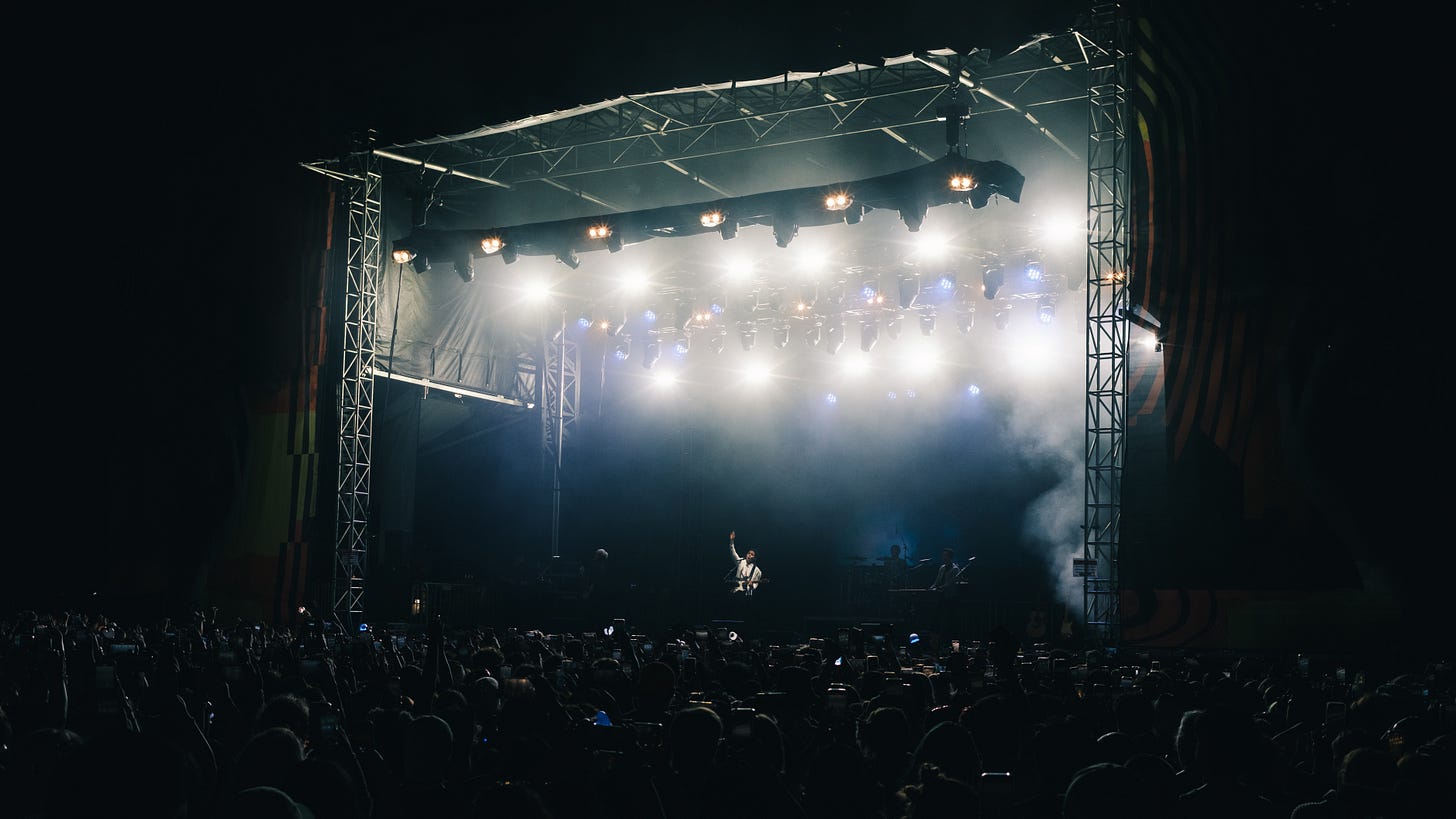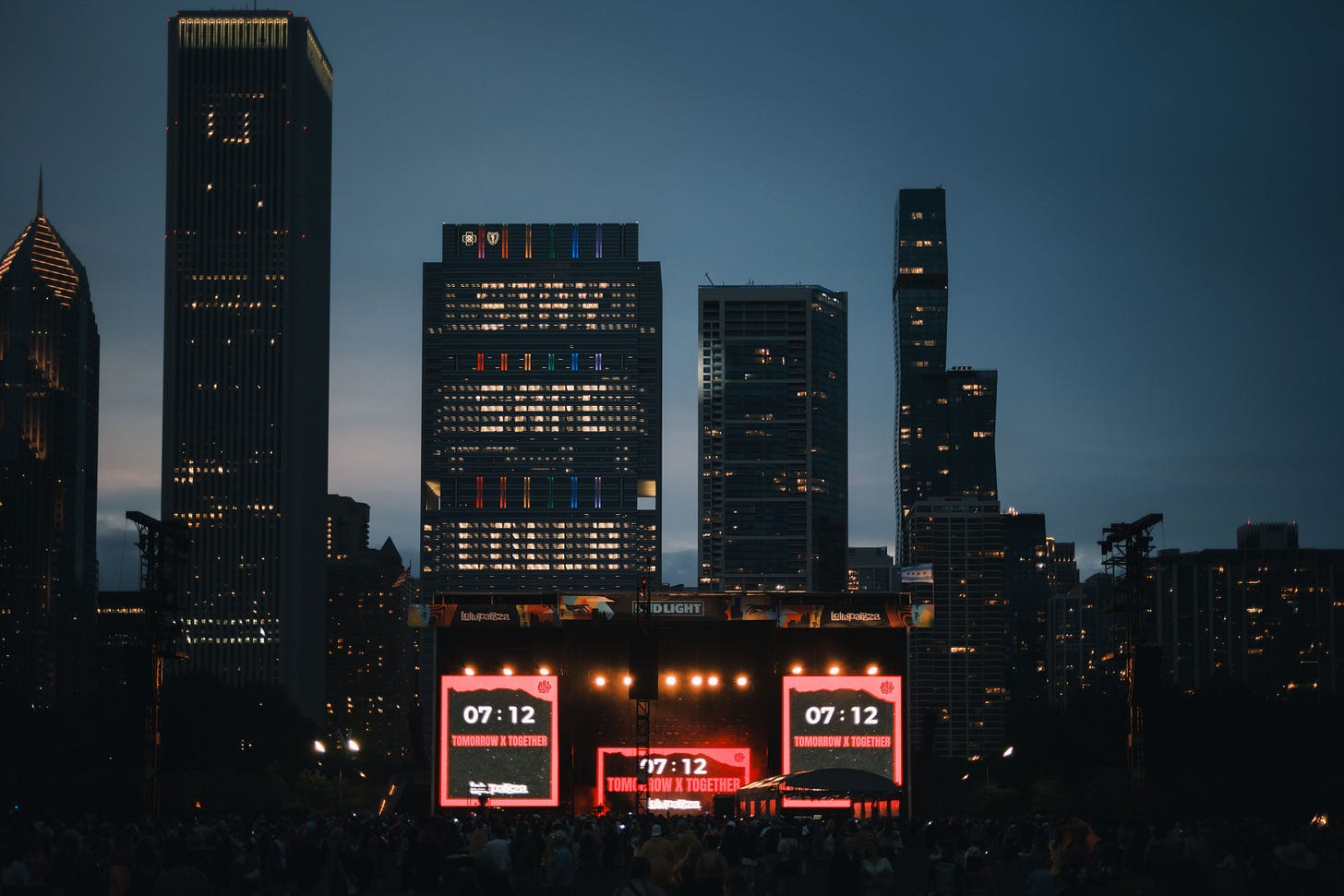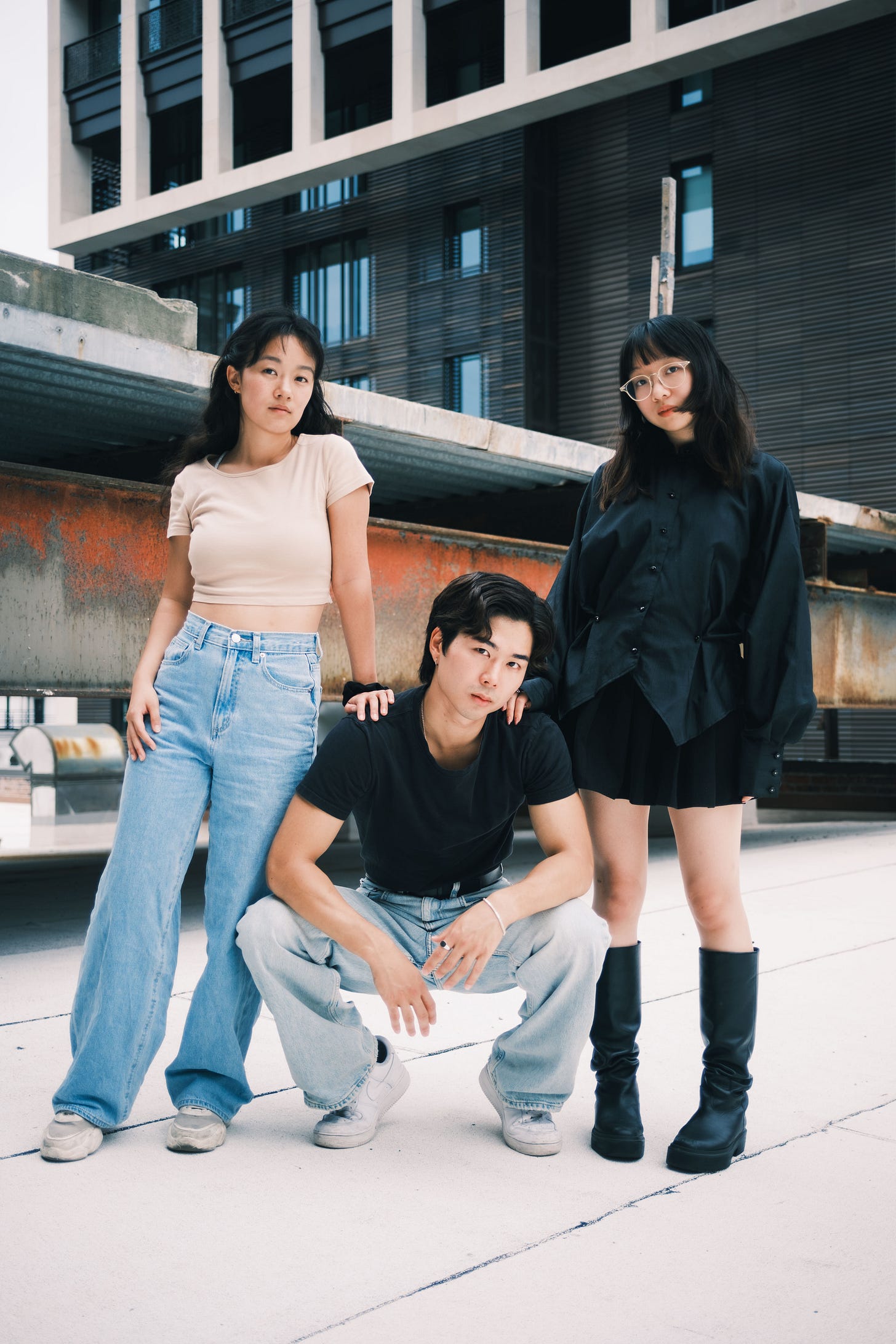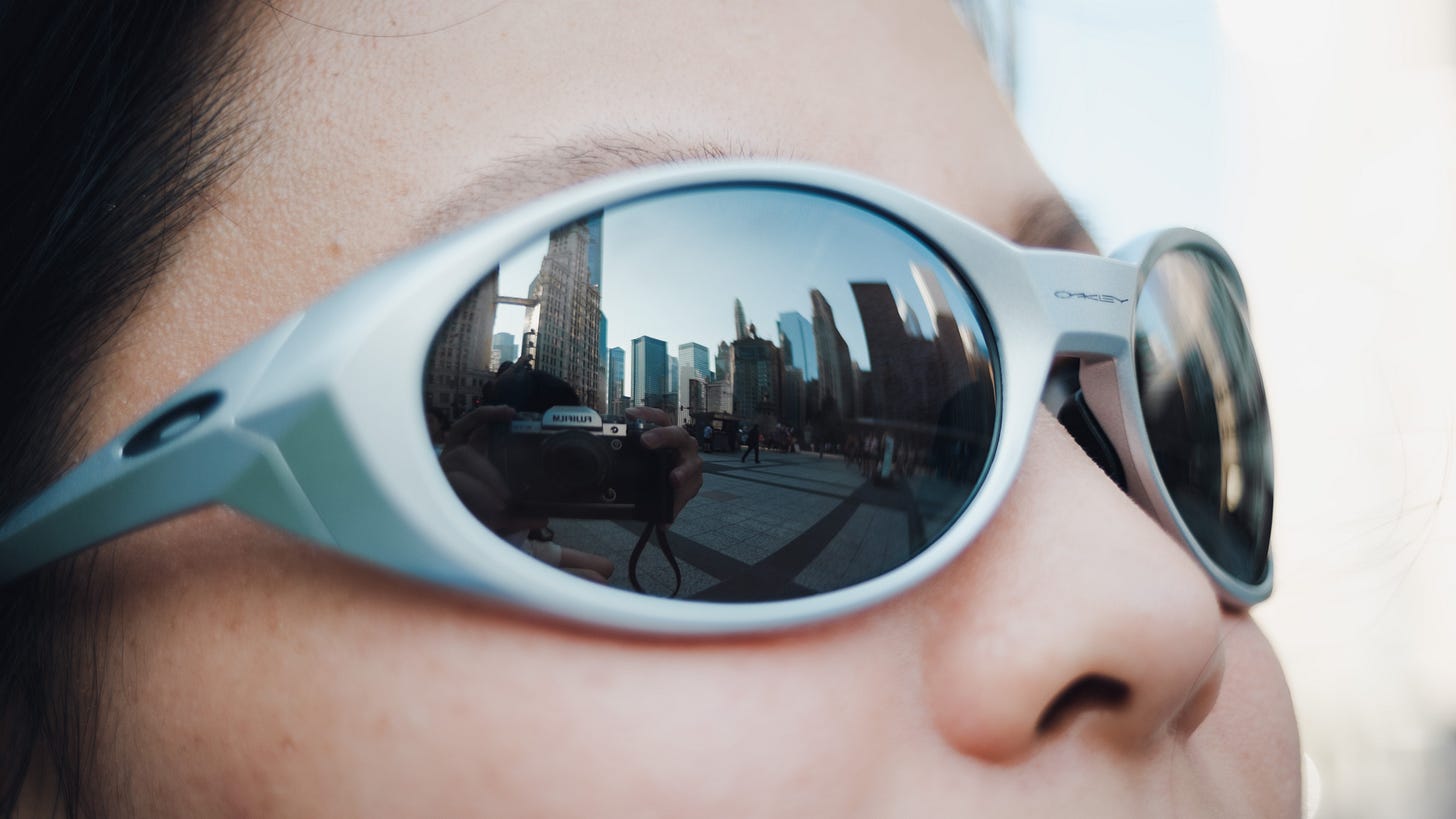Voigtlander Ultron 27mm f/2.0: My Favorite Pancake Lens
Review of the Voigtlander Ultron 27mm f/2.0 for the Fujifilm X-T5
Before going to Lollapalooza, I wanted to get a pancake lens for my Fujifilm X-T5 to reduce its profile to fit into small bags so that I could bring it into the festivals and venues. I already knew the Fujifilm offerings and some of the other 3rd party offerings, but it was the first time I heard about the Voigtlander Ultron 27mm f/2.0. It was a very new lens with minimal online information, so I ordered one and tested it out. If I took it to Lollapalooza and didn’t like it, I could just return it.
After months of use and thousands of shutters, I’ve decided to keep it. Throughout this post, I’ll be reviewing the Voigtlander Ultron 27mm f/2.0 lens and discussing my particular use case, the experience of using it, alternatives, and why I’m keeping it.
TL;DR summary at the end of the post.
As mentioned, my use case is quite specific - I wanted to bring a camera into festivals, which means the setup needs to be:
Small form factor, so I can bring it into the venues with camera restrictions
Able to handle low light without a tripod
Able to focus when autofocus locking can be challenging
High image quality
When I saw the Ultron 27mm f/2.0, I was captivated by the aesthetic. It’s a beautiful full metal pancake lens with the Leica-style focus tab. Attached to my X-T5, the form factor would be perfect and it’d fit into my fanny packs without issue. The f/2.0 aperture is also decently big enough to make the lens effective in low light. It’s also just big enough for some bokeh if I really wanted it. However, I wasn’t sure I could justify the steep 595 USD price tag for a boutique 3rd party manual lens. Regardless, I was intrigued and looked into it.
Infinity Focus
After some research, I noticed an important detail - the manual focus ring correctly stops at infinity focus, and not beyond infinity.
This is an essential feature because none of the Fujifilm lenses nor vintage manual lenses I’ve personally used will correctly focus to infinity. They all focus beyond infinity, which results in a blurry photo. As such, when I’m trying to manually focus, I’m always tweaking the ring in doubt as to whether I’ve actually hit true infinity focus. The worst times were when I was trying to do long exposures at night. It’d be too dark for autofocus to lock and too dark for focus peaking to show clear edges in the electric viewfinder. Then, after the minutes-long exposure, I found I slightly missed focus. Of course, one could use this property to make an entire project like Hiroshi Sugimoto, but most of the time it’s just really annoying and a waste of time.
If the Ultron 27mm f/2.0 has a reliable infinity focus, I can just turn the focus all the way and snap away without any concerns about the focus. The ability to reliably infinity focus pushed me to try out the lens.
Ergonomics and Build
Upon receiving it, the first thing I noticed was the build - the focus ring was butter smooth and the aperture ring was punchy with decent resistance. The entire lens is made of metal and feels hefty in my hands.
This was also the first time I was using a lens with a focus tab. The tab is positioned on the bottom half of the lens, which makes it easy to reach when shooting vertically and horizontally. Admittedly, I haven’t used this lens long enough to obtain the muscle memory and quick focus many photographers rave about for focus tabs. However, it’s a welcome feature because without it it’d be borderline impossible to focus at all due to how thin the focus ring is.
The size of this lens is comparable to the Fujifilm XF 27mm f/2.8 lens, probably even smaller. When attached to the X-T5, the camera looks more like a vintage point-and-shoot and I had no trouble getting this into any venue.
Shooting Experience
Did the infinity focus really improve the shooting experience? Yes, when I was trying to capture farther scenes, not having a single thought about focus was liberating. When shooting infinity distance, I didn’t have to pick focus points so auto-focus would work, nor did I need to do micro tweaks to ensure the manual focus was correct. At first, I was skeptical of the precision. But as long as I turned the ring all the way to the other side, the photo would be sharp at long distances.
For any distance less than infinity, the experience is the same as of that a typical manual lens. I still miss quite a bit for those (I want to say 30% of the time).
Image Quality
After looking at the photos longer, the thing that stood out to me about this lens is the unique rendering characteristic. I find the lens to be very sharp across all apertures when focused correctly. Even at f/2.0, there is only some softness closer to the edges of the photo. However, I don’t find it very noticeable and it is still impressively sharp, and definitely usable. There’s also a decent amount of vignette and punchier contrast at f/2.0.
As soon as the lens is stopped down to f/2.8, the sharpness improves and the vignette becomes less noticeable. Stopped down further, the contrast remains punchy and the vignette eventually becomes unnoticeable.
Despite the technical imperfections, I find the rendering characteristics of the lens at f/2.0 to be very pleasing. The vignette, softness, and contrast give the rendering a film-like look. Even when the photos are slightly out of focus, I still often find the photo to be aesthetically pleasing. Still, if the aesthetic is undesired, the manufacturer’s lens profile is automatically imported into Lightroom and issues will be corrected if lens profile calibration is enabled. Personally, I never calibrate for this lens.
Focusing Distance
Lastly, it’s worth mentioning the lens has a really close focusing distance of 9.8 inches, compared to the Fujifilm 27mm f/2.8 which is 13.44 inches. It’s no macro lens, but it allows you to get real close and take some pretty cool photos. At f/2.0 the background separation is substantial and focus fall off is butter smooth.
X100V
I had the Fujifilm X100V and although I loved it to death, I find its performance to be inconsistent in challenging focus situations. The focus is slow, and it misses quite a bit in low light. But the bigger issue was that ever since I started using the X-T5, I couldn’t help but notice the difference in sensor quality. Thus, I preferred a small form factor lens on the X-T5 sensor. However, the X100V’s form factor is perfect and nothing beats the sound of the leaf shutter on the X100V.
A few months after acquiring the Voigtlander, I ended up selling my X100V. Hopefully, Fujifilm will release an improved version of the X100 series that brings the performance closer to the new cameras. For a newer version, my main requirement is stabilization. Anything more is just the cherry on top. If this happens, you bet I’ll be getting it as soon as it’s announced. There are lots of circulating rumours that a new version will be released in Q1 of 2024.
Fujifilm 27mm f/2.8
The direct comparison to the Voigtlander is the Fujifilm 27mm f/2.8. I had the first generation of the 27mm f/2.8 lens and ended up selling it after a couple of years of use. My original intent was to have a small pancake lens for travelling. After using it for a few trips, I found that the lens’s only advantage was its size. The focus was slow and inaccurate and the photos came out a little soft. I couldn’t tell if the lens lacked resolving power or the focus was just never precise enough. Though not as a big issue, the depth separation was also borderline non-existent since the maximum aperture was f/2.8. I still wanted to try the new version of the 27mm to see if any of the issues were fixed, but the lens was sold out everywhere.
TL;DR
Sturdy and metal build, lens feels responsive and smooth to use
Accurate and easy to use infinity focus is a game changer
Excellent image quality throughout all aperture ranges
Close focusing distance of 9.8 inches
Lens has a unique rendering characteristic that can be corrected in Lightroom if the user deems it as optical imperfection



















